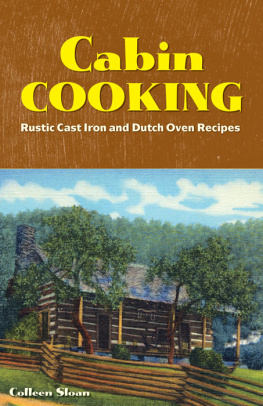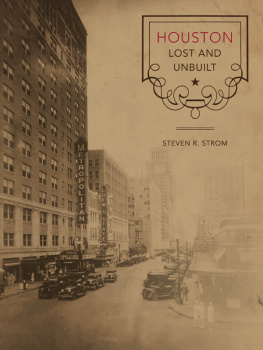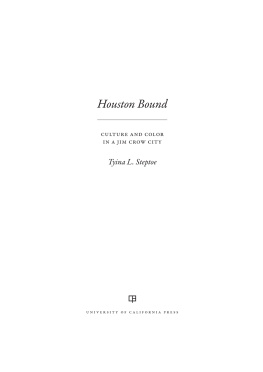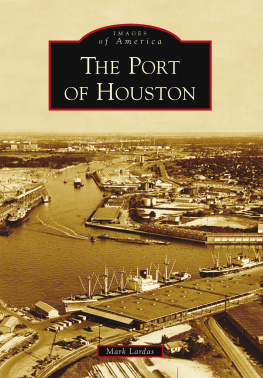
Images of Modern America
HOUSTON
HEIGHTS

Folk artist and longtime Heights resident Anne Hernandezs unique rendering of the most memorable structures in the neighborhood includes the 300 block of West Nineteenth Street, with Heights Theater in the middle. Churches, homes, businesses, schools, and other points of interest complete the panorama. (Courtesy of Anne Hernandez.)
FRONT COVER: Heights Theater, relocated to the middle of the 300 block of West Nineteenth Avenue in 1929, was modernized a decade later to the Art Deco style shown. Owner Charles Wygant devised promotions that drew moviegoers from all over Houston to his 500-seat theater. A gangster movie would be advertised with a bullet-riddled car parked in front, Tarzan movies featured caged lions and tigers, and movie stars sometimes came on opening night. Wygant advertised his theater as Home Owned and Operated by Heights People. (Courtesy of Gary Griffin.)
UPPER BACK COVER: The blue and white tile curb signs are called Houstons first form of street art and date from the late 1920s. While portions are still visible around town, most are missing tiles. This sign was photographed in the 1980s without its block number. (Courtesy of Parsley Studios.)
LOWER BACK COVER (from left to right): During the 1960s, in pretty weather, students often ate their lunches on the tree-shaded lawns of inner-city Houston high schools. Pictured here is the front lawn of John H. Reagan High School, 401 East Thirteenth Street. (Courtesy of John H. Reagan High School.) C.A. Kaiser Pavilion is the centerpiece of Marmion Park, located in the 1800 block of Heights Pavilion, and events held here range from weddings to church services, Houston Heights Association (HHA) events, and band concerts, among others. (Courtesy of John Henry Childs.) The Houston Heights Fire Station, built in 1914 to serve the municipality soon to be annexed to the city of Houston, is owned by the HHA and serves as the hub for much that goes on in the neighborhood. Monthly HHA meetings, community events, school functions, and exhibits are all held here. The handsome building is also rented for weddings, birthdays, and other celebrations. (Courtesy of Mark Williamson.)
Images of Modern America
HOUSTON
HEIGHTS
ANNE SLOAN

Copyright 2016 by Anne Sloan
ISBN 978-1-4671-2429-4
Ebook ISBN 9781439658079
Published by Arcadia Publishing
Charleston, South Carolina
Library of Congress Control Number: 2016939508
For all general information, please contact Arcadia Publishing:
Telephone 843-853-2070
Fax 843-853-0044
E-mail
For customer service and orders:
Toll-Free 1-888-313-2665
Visit us on the Internet at www.arcadiapublishing.com
CONTENTS
ACKNOWLEDGMENTS
A book of images spanning 50-plus years draws upon the generosity of many who contribute their photographs and provide information and insight into the history of this community. All are credited in the captions of this book. Unless otherwise noted, photographs came from the Houston Heights Association Archives. Residents and Heights photographers who kindly indulged my numerous requests for photographs include Jim and Donna Bennett, Jim Fisher, Mark Williamson, Ron Graham, Gary Griffin, John Henry Childs, Davis Tucker, and Gerald Melancon. Aaron Flores and Thomas Wheaton of Boulevard Realty scanned so many photographs, I am sure they thought their task would never end. Laura Thorps scrapbook of HHAs early history was an unexpected treasure. The conscientious proofreading by Lauriel Hindman, Mark and Kathleen Williamson, and Nancy Grissom enabled me to proceed. Lauriel also contributed much-appreciated advice and support when needed. I extend my deepest gratitude to Melvalene Cohen, as well as Harvey West and John Jansen, who used their connections to obtain photographs. As in my previous Arcadia book, Images of America: Houston Heights, I have in no way provided an in-depth study of modern Houston Heights. This book represents only a small portion of this fascinating neighborhood.
Until sometime after 1925, Heights Boulevard was always designated as Boulevard in the Houston City Directory and local newspapers, and Heights High School was always Heights High. For the sake of brevity, all Heights Boulevard addresses are referred to as Boulevard throughout the book. Originally, all of the numbered streets were avenues, but in the 1970s, the city of Houston replaced this designation with street. Abbreviations for entities frequently referred to are Houston Heights Association (HHA), Heights High (HH), and John H. Reagan High School (RHS).
INTRODUCTION
Houston Heights, named because it is 23 feet higher than downtown, sits on 1,796 acres three miles from Houston. Founded in 1891 by out-of-state investors and incorporated in 1896, the community flourished as an independent entity for 27 years before being annexed to the city of Houston in 1918. Though Victorian mansions were built by the investors, O.M. Carter, the self-made millionaire who designed the community, never intended for his new development to be for the elite. Promotional brochures stressed affordability, and 50-by-100-foot lots sold for as little as $250. Carter laid out the city in accordance with the points on a compass. Heights Boulevard, which he patterned after Commonwealth Avenue in Boston, Massachusetts, runs true north and south, and the numbered streets run east and west. Twenty years after its founding, the community had 6,000 residents, an artesian water works, 25 miles of graded streets, electricity, natural gas, six schools, nine churches, a library, a hospital, and a newspaper. Heights residents rode to downtown Houston and back on the trolleys that Carter had electrified, paying 5 for the round trip.
Carefully planned and generously funded, the community quickly attracted buyers from all over the United States and abroad. The congeniality of the neighborhood resulted, in part, from whole families settling on entire blocks, building homes for themselves, their children, and other relatives who continued to immigrate. Houston Heights has one of the states largest clusters of historic churches, and the morally upright character of its residents is indicated by their vote in 1912 to prohibit the sale or serving of alcohol within a large portion of its incorporated boundaries. Four years later, when voters agreed to annexation by the city of Houston, they insisted this law remain in effect, and Houston Heights is one of two communities in Houston classified as dry. Liquor is still not sold in grocery stores, but in recent years, many of the restaurants have obtained private club permits for alcohol.
Houston Heights continued to prosper, as did the city of Houston, and until the 1950s, residents remained a tight-knit group. Neighbors knew one another, and kids prowled the large expanses of vacant land that still bordered their neighborhood. Mirroring other small towns in America, Houston Heights was socially conforming and politically conservative. By the end of the 1960s, changes began, here and across the nation. The large Victorian homes and 1,200-square-foot bungalows were abandoned for modern tract homes being built in suburbs like Garden Oaks, Oak Forest, and Timbergrove Manor. The ranch style homes, a direct descendant of the bungalow, were built on concrete slabs with eight- or nine-foot ceilings and aluminum windows. Heights homes looked dowdy when compared to the crisp, low-slung, cookie-cutter suburban homes.
Next page














